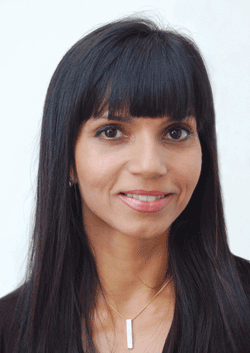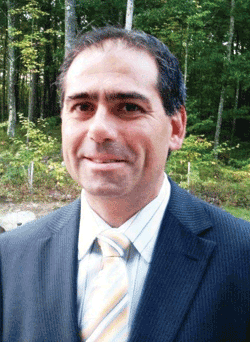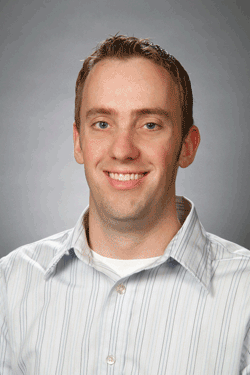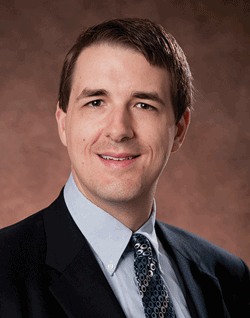SSL companies, from LED manufacturers to component suppliers to luminaire manufacturers, get serious about testing
CONVENED AND MODERATED BY RICHARD COMERFORD
As we approach 2012, a year in which many types of incandescent lamps will slowly fade into history, we convened our annual Lighting/Illumination Forum. One of the major point of discussion was on testing requirements for LED lighting, and it opened up a range of concerns about specifying SSL performance.
Electronic Products: Good morning everyone, this is our December lighting forum; this is something we do on an annual basis to try and assess the state of the lighting industry.
And it’s been a fairly busy year. What we’d like to do is start off by asking each of you in turn to tell us what events you’ve seen in the last year that you think were important in the lighting and illumination space.
And we’re going to start with Usha Patel on this. Usha?
Usha Patel (Director, Latin America Sales, Littelfuse): With a phase-out of the 100-W bulb in Europe, and the initial phase-out for the U.S. determined to be complete by 2014, we have seen a huge surge in design activity. Globally, we find this in the LED retrofit market, with solid-state lighting replacements, not only for residential but also for commercial, industrial, and outdoor lighting applications..

We see a lot of that design activity in the U.S., China, some in Taiwan, Europe, Japan, and Korea. And that is driving interest in circuit protection, because there are many components in these designs that can be damaged by overcurrent or overvoltage. Because many lighting designs are intended for home use, consumer safety is critical, especially regarding the risk of fire and shock.
Electronic Products: You mentioned retrofit. Is it mainly retrofit, or is it new luminaire/fixture designs as well?
Usha Patel: We see a combination of designs for retrofit and new luminaire fixtures. It seems like everyone is developing an offering for the low-power, high-volume lamp retrofit market. But the future is the luminaire fixture development.
Electronic Products: Thank you very much Usha. Peter, we ask you next to comment on what you’ve seen in the past year.


We’ve seen some very aggressive cost downs from our colleagues on this call right now, from the LED perspective and a lot higher efficacy in terms of lumens per watt, a lot more stability in the color points.
You know we’re really getting some strong products that have been following Haitz’s law, actually accelerating Haitz’s law, by the LED folks which is creating a lot of the design flurry Usha mentioned.
And I see that as the biggest movers right now.
Electronic Products: Marc, Peter just mentioned that he’s seen aggressive markdowns in the LED area. What have you seen this year?
Marc Dyble (Product Marketing Manager for Solid State Lighting Business Unit, OSRAM Opto Semiconductors): Yes, I certainly have seen trends towards leveraging the know-how from consumer markets, such as LED backlit LCD TVs, and bringing that knowledge base and technology into the general lighting market. One example is the use of light guides in troffer fixture design, commonly replacing fluorescent lamps.

Additional technological competencies continue to extend into the lighting market, resulting in more sophisticated system design and customized solutions to provide every increased ounce of efficacy from the device level through the optical, thermal, and electrical systems to really maximize the performance of lighting fixtures.
We continue to see more in high-power applications, from street lighting to high bay lighting for industrial spaces, but with more focus on color quality. From a component side there is more flexibility with respect to color binning, by introducing ways to reduce color variation while providing flexibility in white color bin offerings. This is being supported by new LED phosphor developments and manufacturing processes.
This allows for customized color requirements required for retail, outdoor, and other lighting markets.
Electronic Products: Thank you very much Marc. Paul, would you care to comment on what you think are important events in the last year?
Paul Scheidt (Product Marketing Manager, LED components, Cree): Sure. Well about the cost topic, I think part of that is precipitated by the backlighting market not doing so well as of late. The market research shows that all the notebook computers have been completely converted. It’s now 100% LED as of this year, so they’ve already gone as far as they can on notebooks and there’s some uncertainty as to how far they’ll go on TVs.

So there’s been sort of a downturn in the backlighting market, which I would not say caused [price erosions], but they certainly weren’t slowed down by the entrance of backlighting companies into the lighting markets in particular.
Electronic Products: If we can interject just a second on that, we were wondering whether the tablet market has had any impact.
Paul Scheidt: Not directly. I mean there’s only a certain few end products where those backlighting types of LEDs work at all for lighting applications. They’re generally fairly different products in terms of CRI, in terms of color temperature.
They are specific for backlighting versus what’s used in lighting.
Two other things I think are really important, first off, from an LED supplier point of view, the introduction of the IES TM-21 lifetime standard is huge, as far as being able to predict lifetimes in a consistent manner between suppliers.
So I think that’s definitely one of the significant things. And lastly, as Marc had already hinted at, the optimization of how we do things as an LED supplier for end applications, whether that’s providing single bins for our customers, in terms of the color bins and as far as hot binning — the movement towards binning at 85ºC instead of 25ºC.
Things of that nature, things that we’re doing to make life easier for our customers in order to better integrate products.
Electronic Products: Thank you very much. We appreciate that, Paul, and think we’ll come back to a number of those topics as we go along. But first we want to ask you, Brett, what you think the important events of the last year have been.
Brett Shriver (Director of Sales & Marketing, Global Lighting Technologies): We’re an edge-illuminated-light-guide company, so we don’t really play much in the field of just retrofitting. But coming from our side of things, in the past there’s been a lot of work by people just trying to take LEDs and fit them into an old technology, i.e. trying to put LEDs into an Edison fixture base, and just doing drop-in replacements. And over the last year we’ve seen a lot of movement towards products where we fit in a little bit better, which is retrofit of the entire luminaire, rather than just the light source.

We see a lot of companies and a lot of people starting to realize that, in order to take advantage of the true benefits of an LED package, they have to design the luminaire to actually work with the LED rather than just trying to take a luminaire that was designed to use a florescent bulb or an incandescent.
We’ve done a lot of fixture designs; we’ve worked directly with a lot of the fixture manufacturers to do a top-down design of the entire fixture around the end light source, which is an LED.
And for a number of fixtures we’ve seen huge growth in the last year, in sales directly to either consumer- based lighting fixtures or the more industrial two-by-two-troffertype replacements.
By designing the entire fixture to take advantage of the LEDs, the efficiency has increased significantly. There’s two-by-two luminaires that we’re producing that are greater than 60 lm/W.
I think that was one of the thresholds to some of the Energy Star requirements. It seems like there’s a big movement now to really design fixtures and entire luminaires to take advantage of the LED rather than just trying to do the drop-in replacement, and causing inefficiencies that aren’t necessary by trying to take a new technology and fit it into an old package.
Electronic Products: We think that’s a topic also that we’ll explore in more depth. The new design versus retrofit.
Now that we’ve set the base of what we’ve seen happening, we’d like talk about specific topics. We’re going to ask each of you to chime in at any time when you have a topic you want to discuss.
But to get the ball rolling, Electronic Products has been spending some time reporting on LED testing. And one of the things we’ve noticed with LEDs is that new testing scenarios have now come from the IES (Illumination Engineering Society), such a as the TM-21 LED lifetime estimation method to which Paul referred. In conjunction with LM-79 and LM-80, TM-21 gives a very solid set of rules for how to test LEDs, and in some cases fixtures, and how to describe their parameters.
We’d like to know what people’s experience with this has been and whether they think the testing that’s now available and now described is sufficient to really provide consumers with lighting that they know and understand.
Who would like to address that topic? Paul would you like to go on that?
Paul Scheidt: Sure. The TM-21 projection methods really just addresses the LEDs, and that’s an important disclaimer that we always like to make; if you’re talking about system reliability, then you’ve got to take more into consideration than just the LED.
We’ve seen good LEDs that are designed and properly into systems and then fail very quickly and it’s not the LED’s fault, it’s the other aspects of the system that aren’t done correctly.
So there’s a caution that goes along with that statement and that standard.
Electronic Products: Absolutely. Usha, do you have any experience with any of the testing here?
Usha Patel: Testing is a key word at Littelfuse, broader than just the IES facts you mentioned earlier. It includes safety, surge, and reliability testing.
UL 8750 requires the prevention of shock and fire, and it specifically calls out fuses as an option for overcurrent protection. Outside of the U.S., most customers require surge testing to IEC-61000-4-5. Most end customers also do IEEE transient surge testing to IEEE C62.41. IEEE C.62.41 covers low-voltage surge testing (1,000 V and less) and is needed for Energy Star compliance. As a result, Littelfuse provides MOVs and TVS diodes to meet these surge testing requirements.
I’ve worked with many design engineers, not just in the U.S., but across the world, and see a need for further education on the compliance requirements for different regions, and for different power levels on commercial versus residential versus outdoor lighting. These design engineers really want to learn about the tests required by Energy Star, IEC, and UL, such as the IEEE, ring wave and combination waveform tests, and so on.
For instance, there are engineers designing light sources in Asia that they plan to sell in the U.S., but who may not be fully aware of the Energy Star transient-surge test, described in the C.62.41 standard. That means they’re not going to be able to sell their lamps through any of the large retailers in the U.S. unless they obtain the Energy Star seal by passing this surge requirement.
Safety-testing standards in certain countries for specific solid state lighting applications are still in development. Take Japan for instance. Japan has the highest LED adoption rate today, yet there is no safety or transient surge compliance standard in Japan today. For the sake of consumer safety, there may be some compliance standards instilled in 2012.
Electronic Products: Interesting. Can anyone else address this? Peter how about you?
Peter Di Maso: Sure, I totally agree with what Usha just said, that there’s still a lot of education left to do and along the way we’ve been learning along with our customers about ring wave tests and lightening strikes and all that needs to be done on the input of the driver electronics for example.
But the good news is (and this goes back to your previous question regarding the changes) that there is much better knowledge in the whole supply chain now than there was a year ago and than there was especially over two years ago.
So I think that we’re going to solve that problem because it’s coming naturally with the experience, with everybody from the LED manufactures to the driver manufacturers, the IC manufacturers, optics, thermal manufacturers, everybody coming together and putting together this ecosystem where the knowledge base is getting much stronger.
But we still have a long way to go and these – you know the LM79, the LM80 and TM21 are helping along those ways.
And NEMA is also getting involved and working with UL to ensure that the solid state lighting standards meet the criteria of not only energy efficiency but also of safety.
And one more thing I wanted to add (this is going back to the previous question again), one of the big changes I saw from last year in all my travels is that any new outdoor or area light installation — for example a new petrol station, new garage or gas station, or a promenade that’s being upgraded or developed, and even in some cases retrofits (luminaire type retrofits, not light bulb retrofits) — are all going LED. I don’t see any new lighting going up that is not LED at least in the public forum.
I don’t think I’ve seen anything new in the last 12 months that isn’t LED from an area lighting perspective.
Electronic Products: No halogen, no vapor?
Peter Di Maso: Yes. I mean they’re still there of course, but if there’s a new installation or an upgrade it goes to LED technology
Electronic Products: Interesting.
I’m going to ask Marc to come in here (and then I’ll ask Brett also to talk about the fixtures,) to talk about the new standards and how you see those standards affecting the LED business.
Marc Dyble: Yes, we’ve seen a reliance on standardized testing both at the component or, LED level, and at the fixture level which has really helped to precipitate LED lighting into the market.
One of the groups that have been crucial in supporting this has been the Designlights Consortium who supports lighting requirements for categories not covered by Energy Star.
Their main goal is to ensure that energy efficient lighting design becomes commonplace in lighting installations through the use of energy efficient lighting products.
This is done by providing list of qualified commercial-grade LED luminaires that energy utilities, companies, regional energy efficiency organizations can pull from which meet minimum performance requirements, set based on SSL and incumbent products currently on the market.
We have many groups working together, from IES to NEMA and DOE to EPA, but DLC is providing information that the utilities are directly interested in.
Electronic Products: Could you tell us more about that group? It’s not a group I’m familiar with.
Marc Dyble: Designlights Consortium is a group of members comprised of utility companies and energy efficiency organizations that support architects, designers, and property owners in selecting LED luminaires which may be eligible for state and utility energy efficiency program incentives.
Electronic Products: How do they do that, do they provide guidelines?
Marc Dyble: The guidelines are application dependent so, for example, a freezer case fixture will have a different minimum requirement than a fuel pump canopy luminaire. A luminaire manufacturer would submit their product to the consortium for testing just as they would for Energy Star qualification. They use outside contractors to perform independent testing based on IESNA approved testing procedures.
Usha Patel: Just to piggy back on that comment a little bit, it’s absolutely true, I just heard about them a month ago and I’ve done some research on the DLC consortium too.
Not only that but they’re promoting the adoption rate of solid state lighting into these commercial industrial applications. And there’s a lot of utility rebates you can actually get on their website and once those utility members, if you look at the rebates that are being offered on a commercial lighting side, there’s a lot of overlap.
So it’s not only good from a design standpoint and energy efficiency but they’re promoting the adoption right to rebate.
Electronic Products: Brett, have you seen this taking place and what’s your take on the new testing?
Brett Shriver: I fall in with the comment that was made before. We’ve been selling luminaires at extremely high volumes into the Asian markets for a while now, being that Japan is one of the largest consumers of our products through Toshiba lighting. To say that there aren’t really any standards in Japan doesn’t necessarily mean that the products we’re selling there is in any way inferior or doesn’t have quality built into it. It’s just that there’s no national standards.
Part of the problem that we’ve experienced with bringing product into the U.S. revolves around there being so many different standards. And nobody has come to a conclusion as to which ones you should and should not meet. The LM-79 is a fairly easy process that’s clearly laid out; everybody understands LM-79, LM-80 test procedures.
As to UL certification, if you’re a luminaire manufacturer and you’re looking to get UL approval on your LED based products, there are different offices that are known to have more knowledge of LEDs. So a lot of times you’ll direct your fixtures through specific offices because it kind of speeds up or improves the adoption of your UL certification.
And that’s kind of how new LEDs are, if you’re going through like, California, there’s a lot more understanding of what’s going on, of the different categories and the different standard that you have to meet. But people also bring up different consortia, different groups that are helping with the adoption.
Say we want to bring something into the U.S. it’s UL approval and has all its LM79 information. Some companies want Energy Star, some people don’t care. Then there’s Chicago plenum code, if you want to match that.
There’s just so many different specifications, and not all of them are required; you don’t necessarily need to meet Chicago plenum code in every case, but if you want to sell in certain areas or to certain people they’ll ask me for that. So there are so many smaller separate organizations coming up with requirements for specific areas that it’s difficult to meet them all.
As a luminaire manufacturer, you just design the best product you can. You get the approvals that are absolutely necessary based on your customer base, and then you just let the rest of them kind of fall off to the wayside, unless you have a specific customer come to you and ask about it.
Electronic Products: Then you hope you can meet those specs with the existing product line.
Brett Shriver: Or if you don’t, you have to make a business decision: Does that customer who requires that specification represent a large enough demand to for you to meet those codes?
And anybody who wants to can develop a standard that they think an LED luminaire, or any luminaire or product, should meet. And if the consortium or group controls enough demand, they can actually force you to meet that. Otherwise, eventually it just kind of falls by the wayside.
So while we do everything we can, I wish there was a standard that was adopted that was like, “Here, you want to sell into the U.S.? This is what you have to do.”
There’s not, it doesn’t exist in most industries. If you’re buying an appliance, you can buy this hot water heater or buy that Energy Star one. It doesn’t prevent you from entering the market, it just opens up different markets to you.
‘I wish there was a standard…like, “Here, you want to sell into the U.S.? This is what you have to do.” There’s not….’ Brett Shriver
Electronic Products: Well one of the things again Paul mentioned was on the TM-21, he lifetime specification is for LEDs. But not for fixtures or luminaires, and so I don’t know, are people asking you about the lifetime of your fixtures? Or do you provide a guarantee, or how does that work for you?
Brett Shriver: Yes, when we design the product we’ll provide a lifetime for the end product. It’s based on the fixture, and we can do a one-year or a three-year warranty or we can do a 30,000- or 50,000-hour warranty. If you look at a lot of, says, two-by-two troffer lights, you’ll see a typical 30,000 to 50,000-hour guarantee from the manufacturers.
So there are guarantees. There’s not per se a test; like you said LM-80 is LED based. LM-79 will give you the efficiency, but it’s not a life test.
A lot of people ask for LM-79 data on the fixture with LM-80 data on the LEDs, and I don’t know if they truly understand that LM-80 data doesn’t necessarily apply with what they’re going to get out of the final luminaire, because even my company, as a supplier of a luminaire, can only justify the life expectancy of the luminaire in a laboratory environment. If you put it in the ceiling of a building that’s going to get up to 90ºC or 100ºC nonstop, rather than being at ambient, that affects the life of the LED as well.
And lifetime depends on what the air circulation is around the luminaire is. If you put it in a room that has good air circulation, if you hang the fixture six feet off of the ceiling instead of mounting it directly to the ceiling, all that’s going to affect the lifetime.
Electronic Products: Well let me throw something back, when you’re talking about defecting the lifetime there let me throw something back to Marc and to Paul regarding the new way that you’re talking about specifying LEDs, not at you know 25C, the standard temperature and pressure.
But at a much broader range of performance at higher temperatures. Do you see that as having – beginning to have an impact on the luminaire designers to say that they can do a better job of specifying the lifetime of their luminaires?
Let’s see. Marc, do you want to address that?
Marc Dyble: Providing test conditions for not ideal laboratory conditions, e.g., greater than 25°C ambient, is helpful in realizing LED performance closer to the insitu temperature. The LED production process tests at products at one temperature, 25°C, but once placed into an application, the ambient and board temperatures can be considerably higher, therefore hot binning at 85°C helps to predict what our performance shifts is based on temperature.
Coupled with the intended drive current, and even relative humidity, the lifetime can be calculated for a given condition.
Brett Shriver: Just to clarify, though, the hot binning is for color binning, correct, it’s not for the light’s life.
Marc Dyble: Lifetime also.
Brett Shriver: So you do elevated temperature life testing?
Marc Dyble: That’s correct, which is reported in LM-80.
Brett Shriver: Have you always done that?
Marc Dyble: Elevated temperature testing has been done for quite some time, but is just now being reported industry wide. So in that sense it’s new.
Brett Shriver: Because in the past we’ve gotten lifetime curves that have degradation with temperatures.
Paul Scheidt: Well just to clarify LM-80 is what we do to elevate the temperature and to test things long term, which is separate from the hot-binning discussion, so they are two separate things.
The binning is a time-zero thing that we do before we bin up the LEDs and ship them out. We always have curves in the datasheet that show you how many lumens you can get at different temperatures and different drive currents.
The lumens [output testing] in my opinion is less important than the color testing, because color does shift around a bit with current and with temperature. So it is important to test the color closer to where we think our customers are going to use it in an application now.
I’m of the belief there is no one magic number and everybody doesn’t always use 85ºC. There are designs that are higher, there’s designs that are cooler and there’s designs that use different drive currents. But we are picking a test temperature that of course is higher than room temperature, because we do know and can agree that, yes, it’s going to be warmer in application than the 25ºC.
But really the important point is on the color because it’s harder to shift those around, especially with the single-binned products. Generally, you’re only going to be using one or maybe two LEDs in a design. So if there’s only a single bin, it needs to be tested close to where the product’s going to be used in application.
With the other products that have the much smaller bins, those are generally color mixed together and designed so you can mix your way around whatever you’re designing for.
But again these larger array products that are single binned, you don’t really have that option.
[The discussion continues online at www.electronicproducts.com/L-article-farc_LI_forum_dec2011-html.aspx]
Advertisement
Learn more about Electronic Products Magazine





